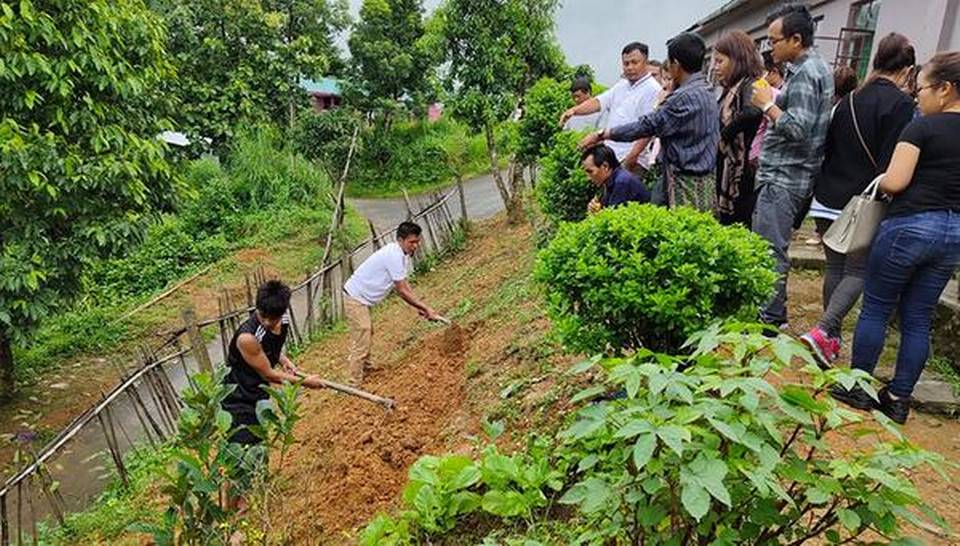
New idea: The first phase of the programme to create edible gardens has been launched in 213 schools and anganwadis.
Self-sufficiency in fruits, vegetables to help fight malnutrition in remote border district
It takes a powerful SUV almost nine hours on non-rainy days to cover 296 km from Mizoram capital Aizawl southward to Lawngtlai, headquarters of the State’s remotest district Lawngtlai bordering Bangladesh and Myanmar.
Loaded commercial vehicles take much longer, and those carrying perishables mainly from Assam’s Silchar, 180 km north of Aizawl, take ages. By the time the pick-up or mini-trucks reach Lawngtlai, the fruits and vegetables are usually not fit to be consumed and the best of the lot are too expensive for many to buy.
This was what Shashanka Ala noted when she was posted as the Deputy Commissioner of Lawngtlai, Mizoram’s most backward and disaster-prone district where a fourth of some 170 villages remain cut off during the monsoon. It didn’t take her long to relate the shortage of quality fruits and vegetables with the deficiencies in the district’s children belonging mostly to the Chakma and Lai ethnic minorities.
Lawngtlai has 35.3% stunted, 21.3% underweight and 5.9% severely wasted (low weight-for-height) children under 5 — highest on all counts in Mizoram.
Ms. Ala and her team designed a remedy: Kan Sikul, Kan Huan. In the Mizo language, it means ‘My School, My Farm’.
“Vegetables and fruits available in Lawngtlai town are costly. But the townspeople at least get them unlike the villages where transporting perishables is unthinkable. So we thought of involving school children, their parents and teachers to create a nutrition garden in each school,” Ms. Ala told The Hindu.
The first phase of the programme covering 213 schools, Anganwadi centres and childcare institutes was launched a few days ago. Another 188 would be added in the second phase while the third phase focussing on livestock and poultry farming would cover all 776 schools and centres to benefit 15,042 children.
“The aim is to make every school, Anganwadi, child care institution and hostel in Lawngtlai self-sufficient in the local variety of fruits and vegetables by March 2020. This is to reduce malnutrition and stuntedness among children,” Ms. Ala said.
The strategy is blending the Centre’s Poshan Abhiyan with regular activities of departments such as Agriculture and Horticulture. The Education Department has been asked to identify at least 100 sq ft in every school and the headmaster is responsible for involving the children in gardening.
The headmaster is also tasked with preparing a timetable of batches of children to ensure every child gets at least an hour of nutrition garden time in a week. Apart from the State government’s farming experts, village heads and parents have also been asked to ensure the nutrition gardens function and the benefits are shared among the children.
“The role of the midday meal coordinator is to ensure that the children eat the produce from their respective gardens as far as possible,” Ms Ala said.
The Deputy Commissioner hoped that the children would learn to be self-sufficient and replicate the habit at home for taking care of food and nutrition. “Because of restricted space on difficult slopes, we have gone for terrace farming,” she said.
The best part of the initiative, she said, was that it did not involve expenses beyond providing the seeds of certain varieties of fruits and vegetables. “The children are being taught manuring and making their own compost pit and the local people are providing water and other logistical help,” she added.
First published by The Hindu on 17 Jul. 2019